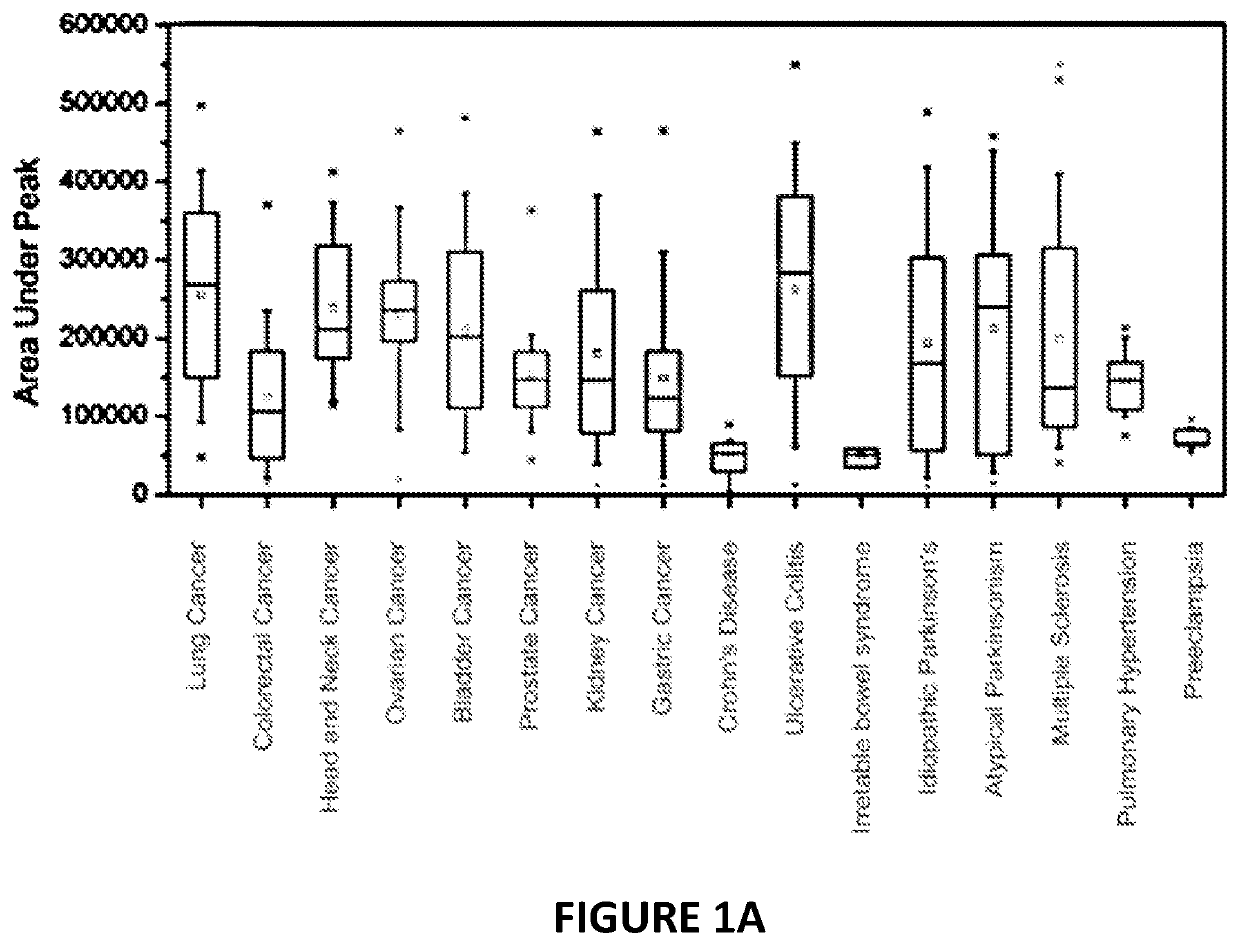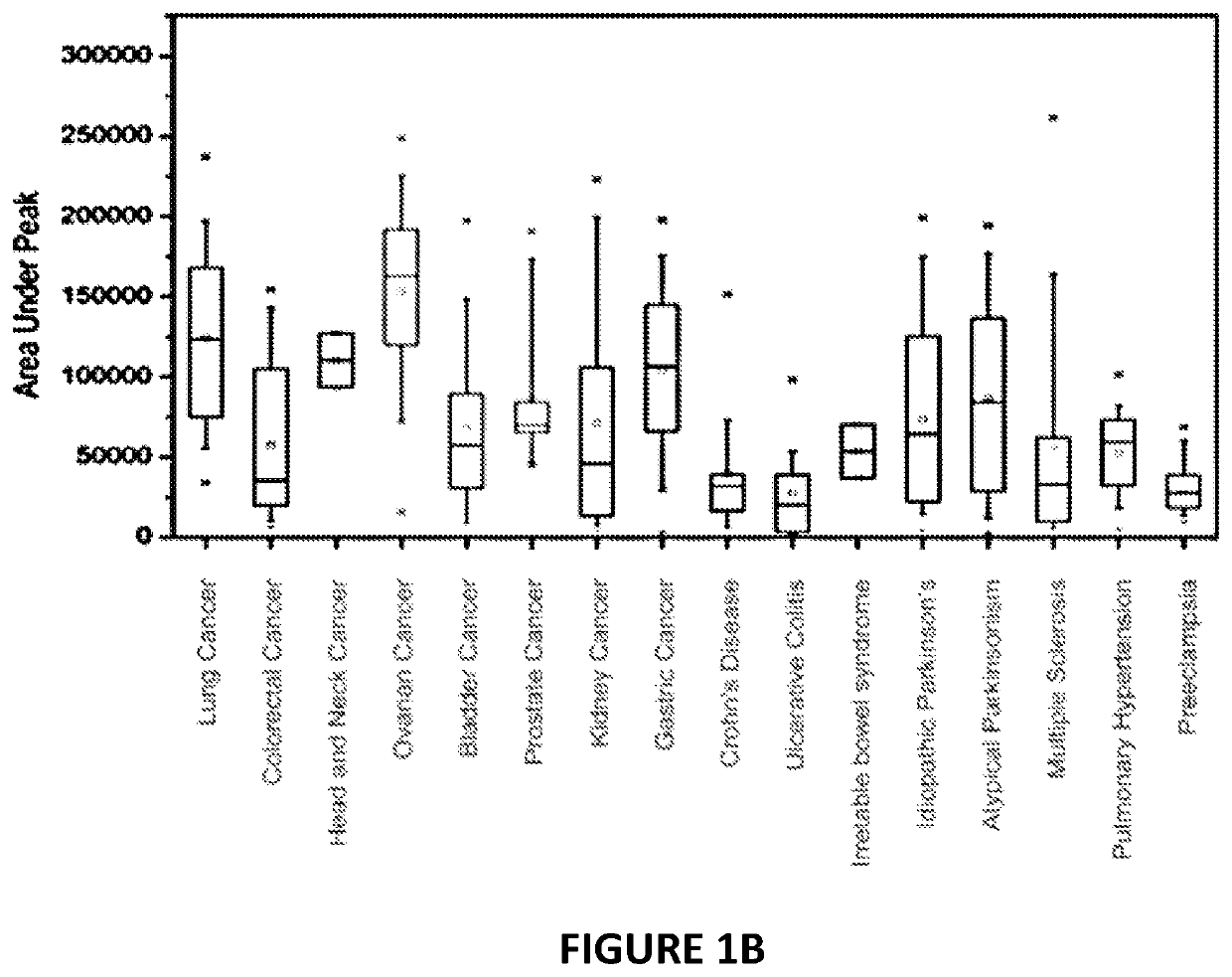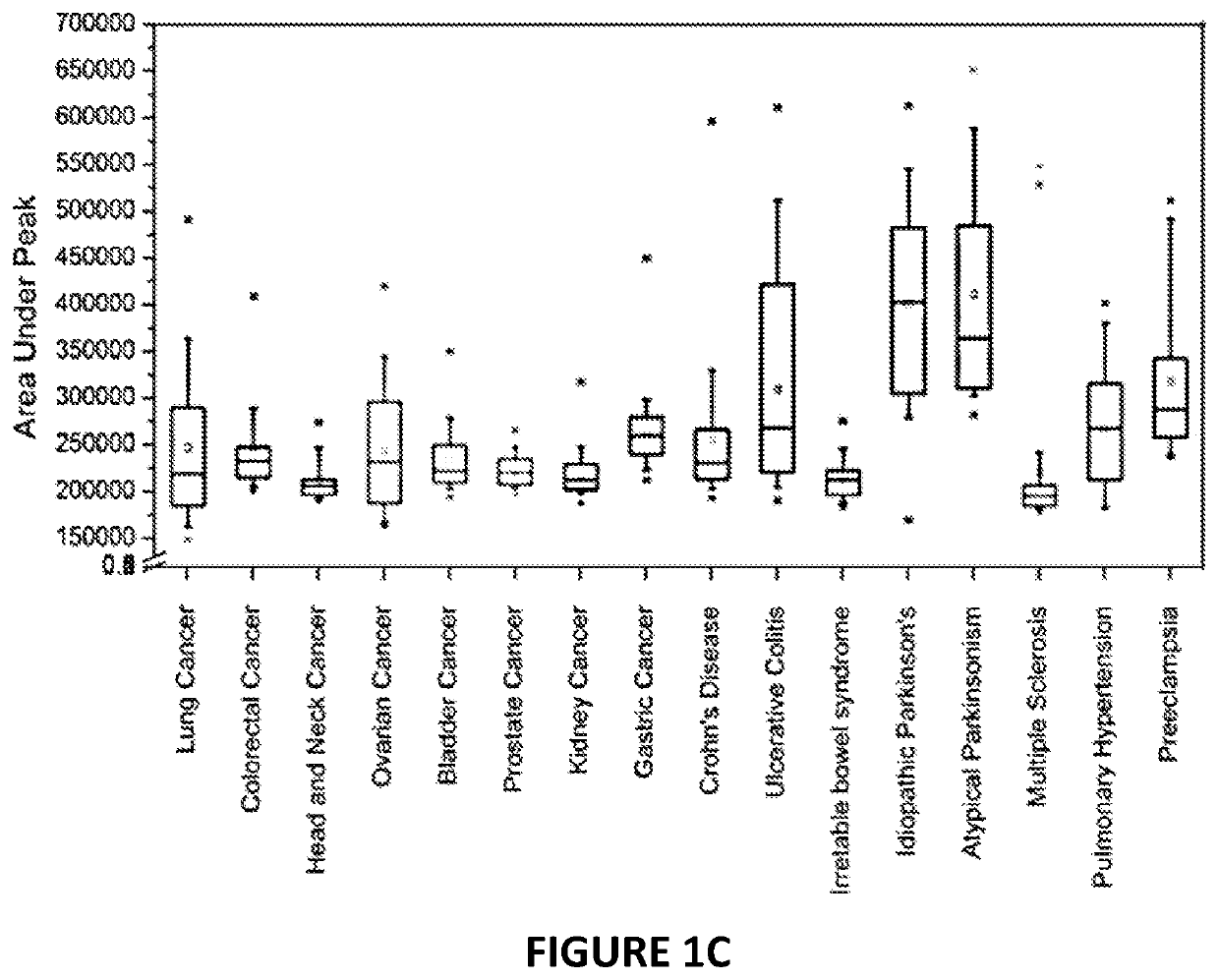System and method for differential diagnosis of diseases
a disease and system technology, applied in the field of system and method for differential diagnosis of diseases, can solve the problems of false positive response and false negative, and achieve the effects of reducing the risk of false positive diagnosis, reducing the risk of false positive response, and ensuring accuracy
- Summary
- Abstract
- Description
- Claims
- Application Information
AI Technical Summary
Benefits of technology
Problems solved by technology
Method used
Image
Examples
example 1
ign and Test Population
[0172]Breath samples (total number 2808) obtained from 14 departments in nine clinical centers worldwide were subjected to meta-analysis. The same collection equipment and the same strict procedure were used in all participating sites, so the samples were comparable. The clinical features of each examined group are summarized in Table 1.
[0173]
TABLE 1Clinical characteristics of all tested patients and controls in the current studyDiagnosed SubjectsHealthy SubjectsGroupnAge ± SDMale, n (%)Smoker, n (%)nAge ± SDMale, n (%)Smoker, n (%)Lung cancer4567 ± 0923 (51%)44 (98%)2356 ± 1412 (52%)12 (52%)Colon cancer7166 ± 1042 (59%)09 (11%)8960 ± 1467 (75%)09 (13%)Head & Neck cancer2262 ± 1219 (86%)13 (59%)1950 ± 1206 (32%)05 (25%)Ovarian cancer4851 ± 1100 (00%)00 (00%)4847 ± 0900 (00%)00 (0%) Bladder cancer7369 ± 1168 (93%)53 (68%)3566 ± 1231 (88%)25 (71%)Prostate cancer1166 ± 08 11 (100%)05 (45%)Kidney cancer3365 ± 1322 (66%)15 (45%)Gastric cancer9963 ± 1257 (58%)26 (27...
example 2
Study
[0175]Parkinson Disease (PD)
[0176]43 Idiopathic Parkinson's disease, 16 Parkinsonism and 37 healthy subjects were enrolled to the study. The diagnosis of each of the patients was determined according to clinical examination of an experienced specialist. All subjects were above the age of 18 and signed an informed consent. Clinical features of study groups are summarized in Table 2. All Patients were examined at least twice by movement disorders specialist. The first phase included a comprehensive neurological examination for searching clinical signs and symptoms that are indicative to atypical Parkinsonism, including, inter alia: presence of early autonomic signs such as (urinary urgency, impotence and others; recurrent falls in the early stages of the disease progression; cerebral or pyramidal signs; eyes movement disorders (Vertical ophthalmoplegia for instance); past or current psychiatric treatment or the appearance of new psychiatric symptoms or delusions.
[0177]In addition...
example 3
mple Collection
[0226]All breath samples were collected in a controlled manner following a strict protocol. The same breath collection equipment and procedure was applied in all breath collection locations. The breath collection procedure started with a 3-5 minutes “lung wash”. During this process, the subject inhales via both a charcoal (ABEK) and bacterial filter, cleaning about 99.99% of the exogenous VOCs found in ambient air. When done, the subject exhaled through the device, which has two separate ports. One port directs the first part of the exhaled air, consisting mainly of dead space air, to a plastic bag. The rest of the exhaled air (the alveolar air) is directed to a 750 ml chemically inert Mylar sampling bag. The process was repeated after a short period, for a total of two samples for each subject. By the end of the sampling process, the content of each Mylar bag was transferred, using a simple vacuum air pump, into a Tenax TA and Carboxen-1018 glass adsorbent tube (Sigm...
PUM
| Property | Measurement | Unit |
|---|---|---|
| thickness | aaaaa | aaaaa |
| diameters | aaaaa | aaaaa |
| diameters | aaaaa | aaaaa |
Abstract
Description
Claims
Application Information
 Login to View More
Login to View More - R&D
- Intellectual Property
- Life Sciences
- Materials
- Tech Scout
- Unparalleled Data Quality
- Higher Quality Content
- 60% Fewer Hallucinations
Browse by: Latest US Patents, China's latest patents, Technical Efficacy Thesaurus, Application Domain, Technology Topic, Popular Technical Reports.
© 2025 PatSnap. All rights reserved.Legal|Privacy policy|Modern Slavery Act Transparency Statement|Sitemap|About US| Contact US: help@patsnap.com



